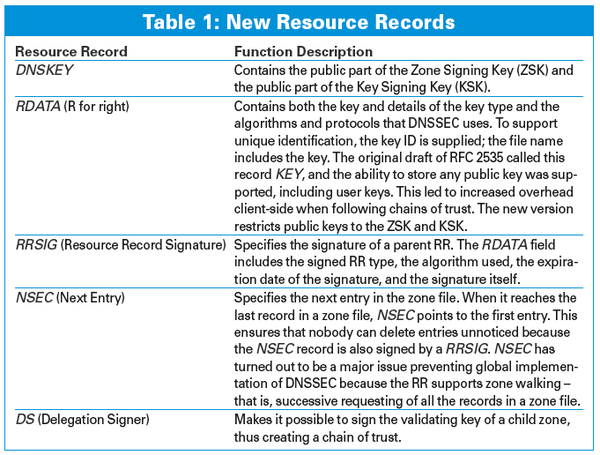Trusted name resolution with DNSSEC
Chain of Trust

© Sergey Ilin, Fotolia
Some Internet exploits target name resolution servers. DNSSEC uses cryptography to protect the name resolution service.
System administrators and security consultants have devised elaborate strategies for protecting computer networks, but one very basic part of the Internet infrastructure is still surprisingly vulnerable: the name resolution system. Intruders have developed sophisticated techniques for spoofing DNS responses. Of course, the white hats have fought back with their own defensive maneuvers, but experts agree that a fundamentally different approach is necessary. The DNS Security Extensions (DNSSEC) system [1] offers a comprehensive solution for authentication and data integrity for DNS.
DNSSEC adds cryptographic signatures to the legacy name resolution service. But a signature can't solve the problem alone (because an attacker can create a signature, too). DNSSEC also needs a method for authenticating the public key used in the asymmetric encryption, which means the system must provide its own form of Public Key Infrastructure (PKI).

[...]
Buy this article as PDF
(incl. VAT)
Buy Linux Magazine
Subscribe to our Linux Newsletters
Find Linux and Open Source Jobs
Subscribe to our ADMIN Newsletters
Support Our Work
Linux Magazine content is made possible with support from readers like you. Please consider contributing when you’ve found an article to be beneficial.

News
-
KDE Unleashes Plasma 6.5
The Plasma 6.5 desktop environment is now available with new features, improvements, and the usual bug fixes.
-
Xubuntu Site Possibly Hacked
It appears that the Xubuntu site was hacked and briefly served up a malicious ZIP file from its download page.
-
LMDE 7 Now Available
Linux Mint Debian Edition, version 7, has been officially released and is based on upstream Debian.
-
Linux Kernel 6.16 Reaches EOL
Linux kernel 6.16 has reached its end of life, which means you'll need to upgrade to the next stable release, Linux kernel 6.17.
-
Amazon Ditches Android for a Linux-Based OS
Amazon has migrated from Android to the Linux-based Vega OS for its Fire TV.
-
Cairo Dock 3.6 Now Available for More Compositors
If you're a fan of third-party desktop docks, then the latest release of Cairo Dock with Wayland support is for you.
-
System76 Unleashes Pop!_OS 24.04 Beta
System76's first beta of Pop!_OS 24.04 is an impressive feat.
-
Linux Kernel 6.17 is Available
Linus Torvalds has announced that the latest kernel has been released with plenty of core improvements and even more hardware support.
-
Kali Linux 2025.3 Released with New Hacking Tools
If you're a Kali Linux fan, you'll be glad to know that the third release of this famous pen-testing distribution is now available with updates for key components.
-
Zorin OS 18 Beta Available for Testing
The latest release from the team behind Zorin OS is ready for public testing, and it includes plenty of improvements to make it more powerful, user-friendly, and productive.

